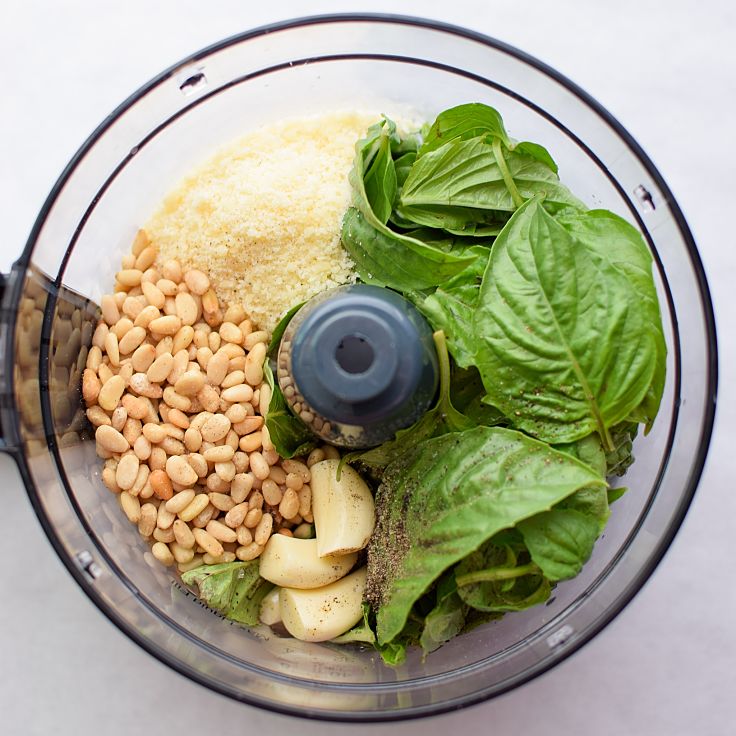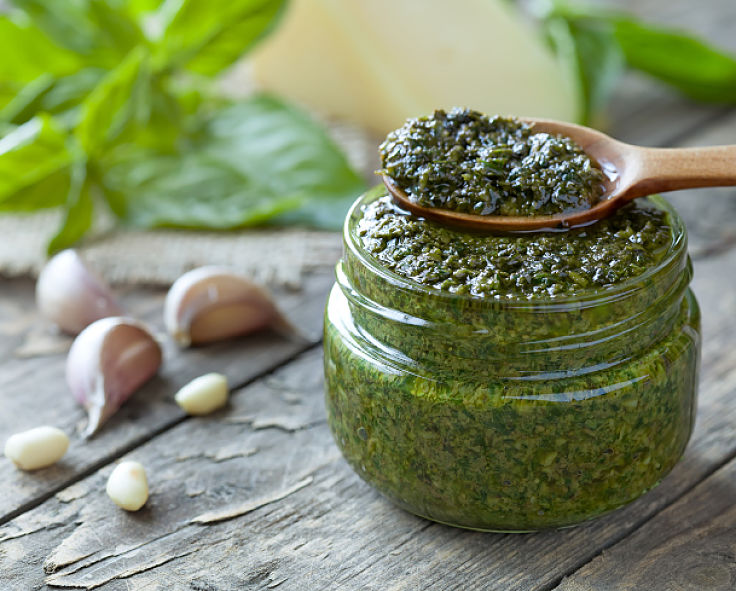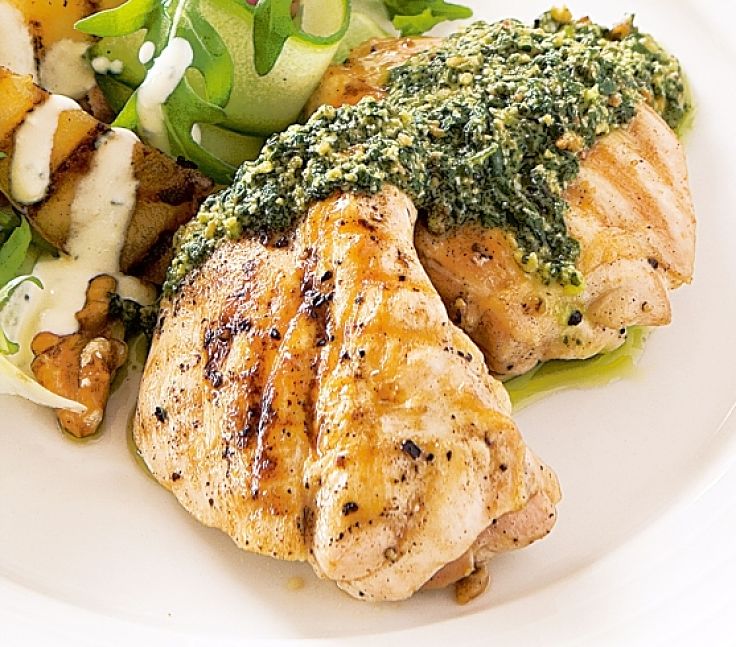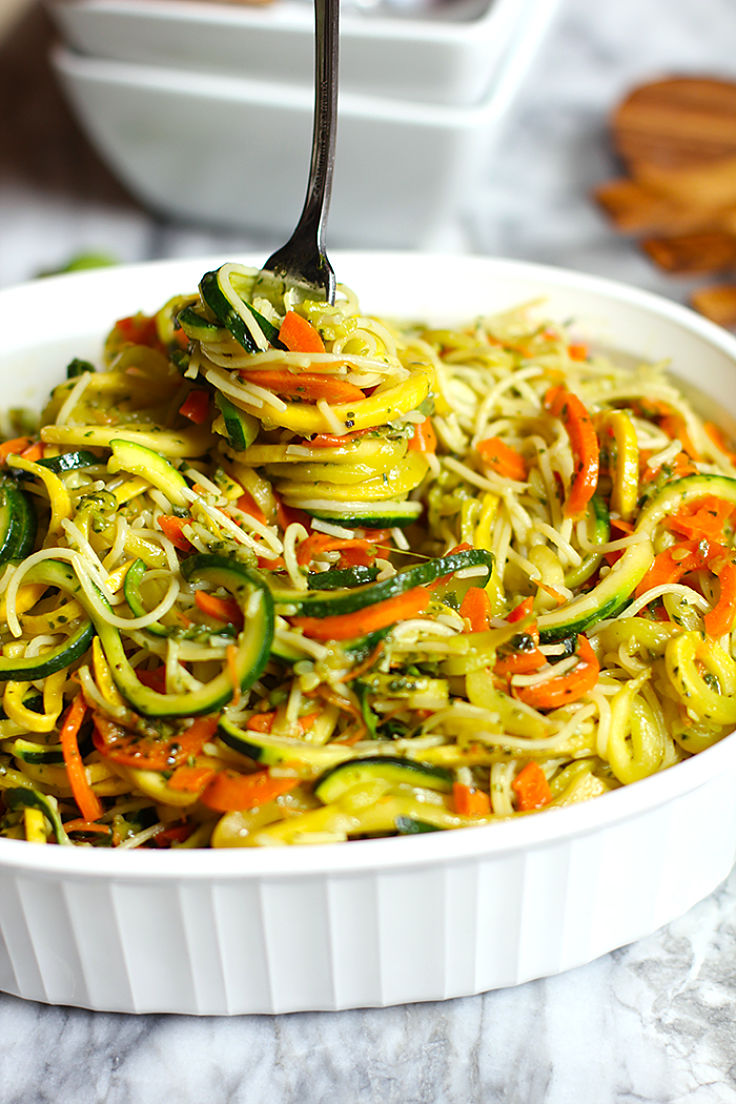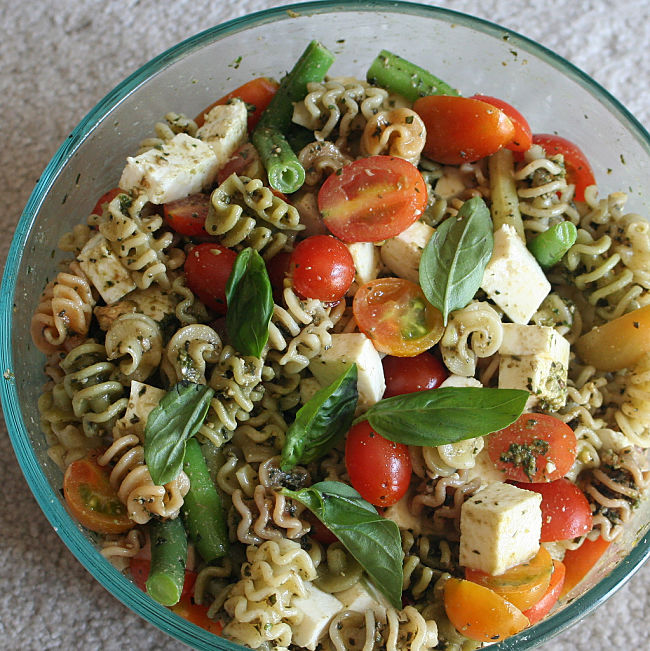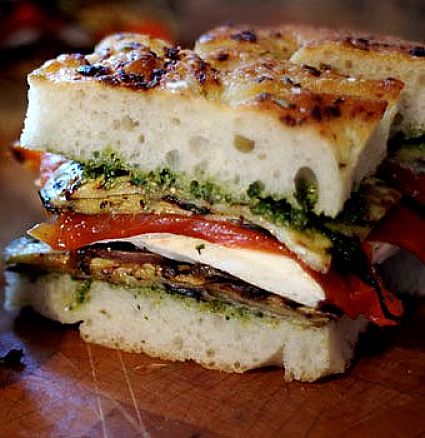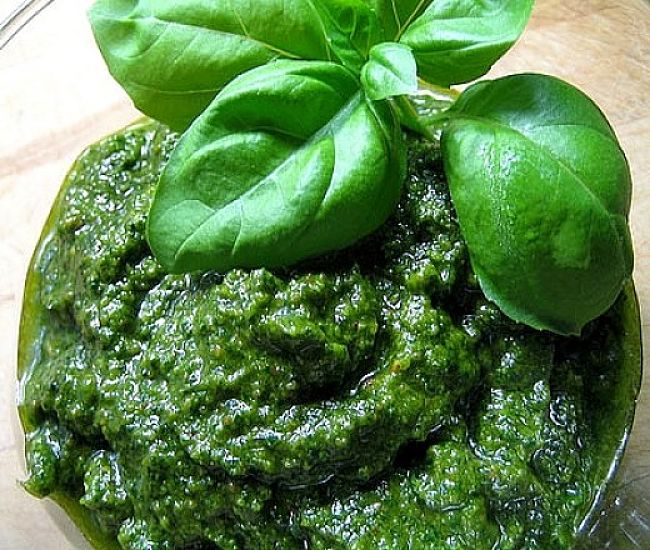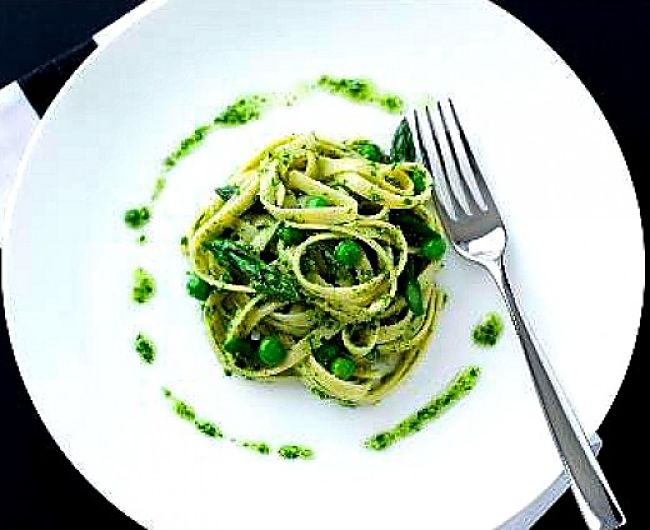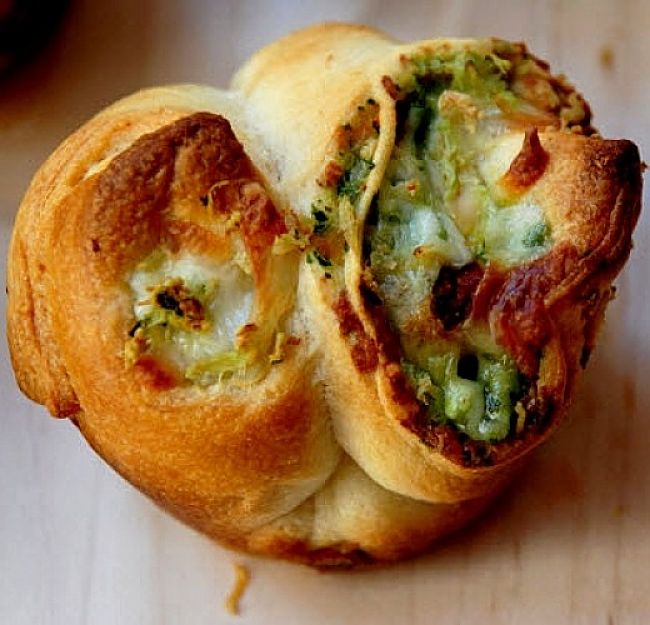Best Pesto Recipe Homemade, Nutritious, Delicious Basil Pesto Sauce
If you grow basil or there is a glut of basil in the local market or supermarket the best way to use it is basil pesto, which can be easily stored by freezing. There are many variations you can try to suit your taste preferences. Use the ingredients you like or the ones that are seasonally available. The main variations are the nuts and oils added to the chopped basil leaves. Parmesan, Roman and other hard cheeses can be added to fresh pesto, but omit the cheese if you intend to freeze the pesto for later use as the cheese won't freeze and thaw very well.
Most basil pesto recipes include pine nuts, raw or toasted but walnuts and many other nuts can be used as substitutes. Pesto is very versatile and can be used as a pasta sauce, salad dressings, spread over toasted baguette slices and focaccia and snacks, as a sauce in homemade pizzas and as a marinade. This article describes how to made pesto at home, the various variations to try and the many uses for pesto.
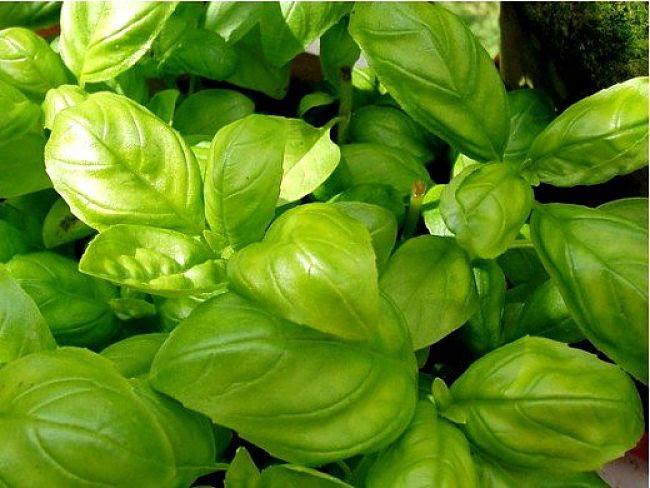
Basic Fresh Basil Pesto Recipe
Ingredients
- 2 packed cups fresh washed basil leaves
- 1/2 cup freshly grated Romano cheese, Parmesan-Reggiano, crumbled fetta or other cheeses
- 1/2 cup extra virgin olive oil
- 1/3 cup pine nuts, walnuts or other nuts
- 3-4 garlic cloves, minced or finely chopped
- Salt and ground pepper to taste
- A Food Processor or Blender (not essential but desired)
Method
Put the basil, garlic cloves and nuts into a blender and pulse to chop roughly a few times in a food processor.
Slowly pour in the olive oil in a continuous stream while blending slowly. Stop blending briefly and use a wooden spoon or a rubber spatula to push down basil leaves that stick to the side. Don't overdue the blending - you want pieces of basil and nuts to remain rather that a liquid with no structure.
For fresh pesto add the grated cheese and pulse again very briefly. If the pesto is to be frozen, don't add the cheese at this stage, but add it after it is thawed.
Add a pinch of salt and freshly ground black pepper to taste.
Storing Pesto by Freezing
If you want to freeze the pesto, leave out the cheese, which does not freeze and thaw well. Pesto can be frozen in glass jars or plastic containers. Leave a small space at top for expansion. To stop blackening, put a layer of plastic wrap onto the top of the pesto or cover with a thin layer of olive oil or lemon juice, before putting the lid on. You can also freeze in ziplock bags with all the air squeezed out. Line the mould with plastic film so that the blocks can be popped out and sealed plastic bags from which the air has been removed. Frozen pesto is quite soft and small portions can be easily snapped off larger blocks.
When you want to use the frozen pesto, simply take the required number of frozen blocks, defrost and add in grated cheeses such as Parmesan, Romano or fetta.
Freezing Basil Leaves
You can freeze the basil leaves themselves tossed with a bit of olive oil and stored in plastic bags from which the air has been squeeze the air out. To stop blackening dunk the basil into 10-15 seconds with a little with salt and baking soda. Remove and plunge into an ice bath. Towel to dry completely before freezing and storing in air-tight containers.
Variations on the Basic Pesto Recipe
- Substitute lemon zest and juice for some or all of the oil and cheese
- Used pine nuts toasted in a frying pan to add extra flavor.
- Replace olive oil with a square cake of firm tofu and 2/3 cup of soy or cows milk.
- Add wilted spinach and other greens.
- Use chopped almonds, macadamia, cashews, pecan, pistachio nuts and virtually any other nut or nuts.
- Good combinations include mushroom with walnuts, turnip greens and walnuts, sundried tomatoes with pine nuts or walnuts, arugala with watercress and pine nuts or pecan nuts
- Add chillis and various spices to the pesto for extra zest
- If you do not have a food processor, you can chop everything by hand or using various hand choppers.
- Add chopped roasted red peppers or Thai peppers
- Sprinkle with Balsamic vinegar.
- Any finely grated hard cheese can be used to thicken the oil and binding it to the other dry ingredients. Some softer cheeses can be added in chunks.
- Grape seed oil and other oils with a neutral taste can be used as a substitute.
Ways to Use Pesto
- Pasta Sauce - Pasta is an ideal use for pesto. Toss the hot cooked pasta with pesto sauce. The heat releases the fabulous flavors of the garlic, basil and cheese.
- Pesto Spread - Pesto makes a delicious sandwich spread and as the base for many appetizing dips. Toast a baguette and while warm, spread with pesto and top with slices of ham, cheese or chicken.
- Pesto Stuffing - Mix with other stuffing ingredients such as cream cheese, herbs and spices and bread crumbs for an excellent stuffing for poultry.
- Salad Dressing - Pesto, by itself or mixed with olive oil, mayonnaise, yogurt and other ingredients makes a wonderful salad dressing.
- Pesto Finishing Sauce - Add a little extra olive oil to the pesto and use it to provide a fabulous finishing touch toany grilled meat or vegetable dish.
- Mashed Potato - Jazz up mashed potato with a teaspoon of pesto.
- Marinade - Use pesto to marinade chicken breasts, pork, lamb or beef, before grilling, baking in the oven or cooking using your barbecue.
- Soups - Add to soups to enhance the taste of minestrone and many other soups.
- Fish Sauce - Spread on fish fillets, fresh sardines, grill or wrap in foil and oven bake.
- Coating for Frying - A perennial favorite is to spread it onto any thin cut of meat, chicken or fish, then coat with bread crumbs and quickly shallow or deep fry the meat.
- Lasagne - Mix pesto with ricotta cheese and use as a sauce for meat or vegetarian lasagne.
- Sauce for Roast Potatoes - Par-boil potatoes, drain the water and add a little pesto and toss to coat the potatoes, add to a roasting pan with a little hot oil and roast in the oven.
- Dips - Mix with crème fraiche and use as a dip for crudités.
- Toasted sandwich filling - Mix pesto with cubed ham or roast beef pieces and grated cheese and use in a toasted sandwich.
- Pizza Base - spread on a pizza base instead of tomato purée or paste. You can spread with cream cheese first.
- Addition to Tomato Salsa - Mix pesto with diced tomatoes, onion and avocado and serve with cooked pasta, meat and other dishes
- Sauce for Pasta Salad - Mix pesto with pasta, Fresh or smoked salmon ( or tinned tuna), sweetcorn kernels and mixed greens for a salad.
Related Articles and Recipes
=> Homemade Pizza - Toppings, Sauce, Dough Recipes, Options and Ideas
=> Best Blue Cheese Recipes for Dips, Sauces, Bakes, Pasta and Meat Dishes
=> How to Make Garlic Sauces, Aioli, Toum - Best Sauce Recipes, Tips, Variations
=> Pesto Sauce Variation Recipe Collection - Gremolata, Chimichurri, Parsley & Other Herbs
=> Best Chimichurri Sauce Recipe for Argentine Food
=> Make Buffalo Wing Sauce at Home - Quick, Easy Recipes
=> Collection of Best Sauce Recipes for Fish Fillets
=> Lemon Sauce Recipes - Sweet, Savory, Sour, Spicy, Tangy
=> 10 Easy Butter Sauce Recipes and Cooking Tips
=> 14 Best Nut Sauce Recipes: Peanut, Almond, Pecan, Macadamia, Walnut, Cashew
=> Best-Fettuccine-Alfredo-Sauce-Recipes-with-Interesting-Additions
